OK, so here is the more exact data. In both cases, realize the chart somehow is slightly off the graph, I tend to use the data off the chart because it has more info. Not sure why, but the graph extrapolates slightly differently if you are comparing.
But first....a good look at the Damper Docs damper...just seemed to be held together with something that didn't stick to anything. Buyer Beware! They do have a good rep, we'll see what they say
FYI - I always install with an installation tool, and it came to me in a box from the company. Given that it started slipping on initial fire, my guess is it was a bad bond from the start. Talk about lucky, if it would have let go, it would have been a very different day!

Here is the 457, although it would look like it was still climbing on the graph, the numbers were leveling off after 6000. Watching the dyno I saw 6400 on the tach, without so much as a burble. It was very clean, not sure why the chart stopped where it did, must where it stopped collecting based on load. This was built to be a 6000 rpm peak, so it's where we want it, so no surprise. It liked 38 degrees of timing, no surprise there either
Ironically, the two 465s had the slightly higher HP peak, and the two 750s had the higher torque peak, backwards to what you might think. 545/545 vs 544/558, HP is within spitting distance and I would call them equal, but it does show Drew's carbs were working nice, and should tell people yet again that "small carbs for more torque" is a fallacy.
I make no excuses for this engine, it is a fun and bad mofo, but there were some differences in the dyno runs when you look at both. First, note the engine temps, I think there was 10 more HP if we finished up with a cool down, however, losing the balancer, checking everything out, and doing some carb swaps ran me out of time and I wanted to give both motors time on the pump. Second, we saw the most torrential rain storm I have driven in for a long time and the weather changed significantly at lunch time for the second engine. Although the dyno will adjust, I do think the TW would have been called the winner for peak HP if things were a bit more stable, but likely not by a wide margin. In a 4 speed 4.11 68.5 Mustang, this will be a stout runner
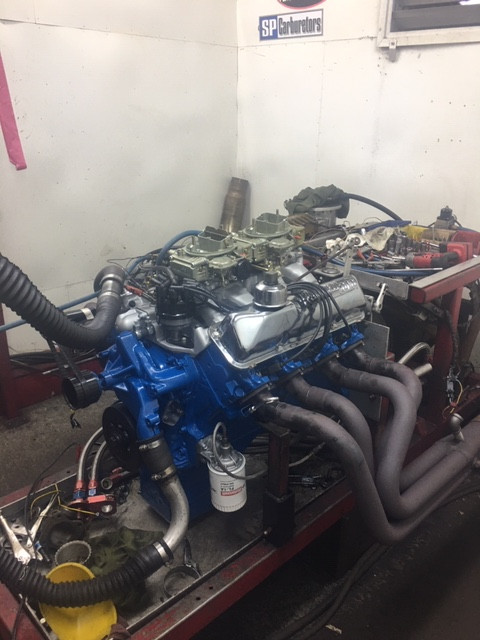
450s

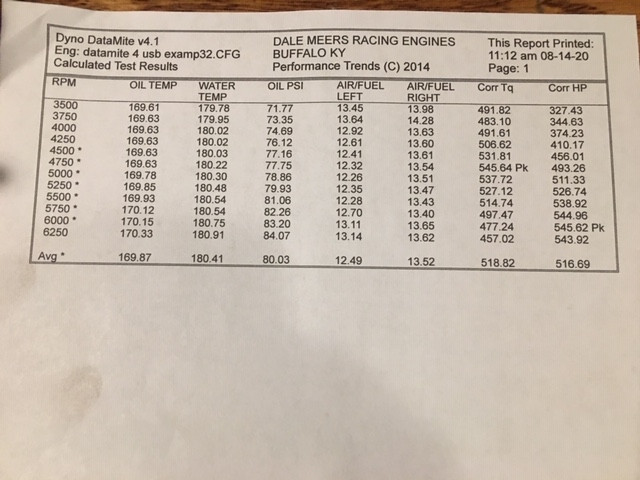
750s
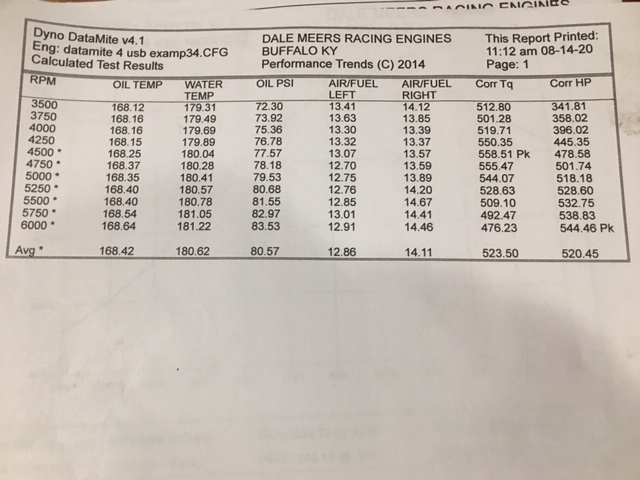
Here is the 461, it was a pretty easy dyno run after switching balancers back. We ended up at 32 degrees of timing. A little less than normal, but in the ball park, likely due to the shallow dish and tight quench. This was a gentle and happy build. 558/594 peaking at 5750 RPM. It also had no problem at all hanging in as high as we wanted to pull. This one is going in a 63 or 64 Gal, with a 4 speed AT Chevy box conversion. The curve should very nice for the use. Less drag car than cruiser, but should still be able to scare wives and small children at ease

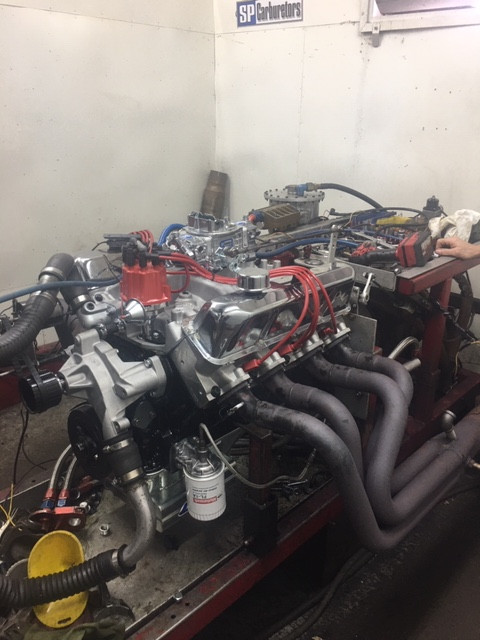
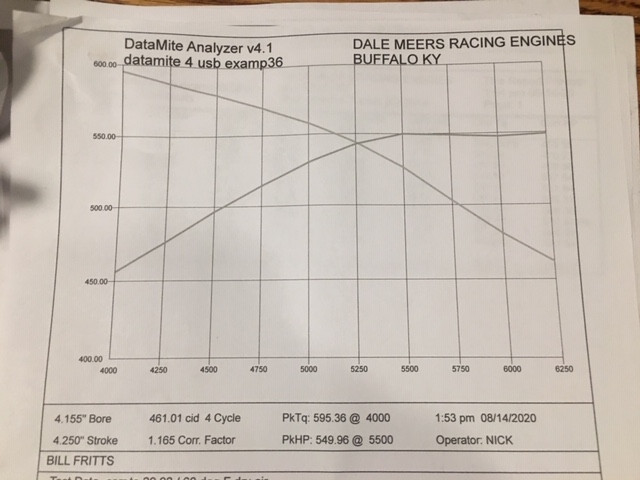
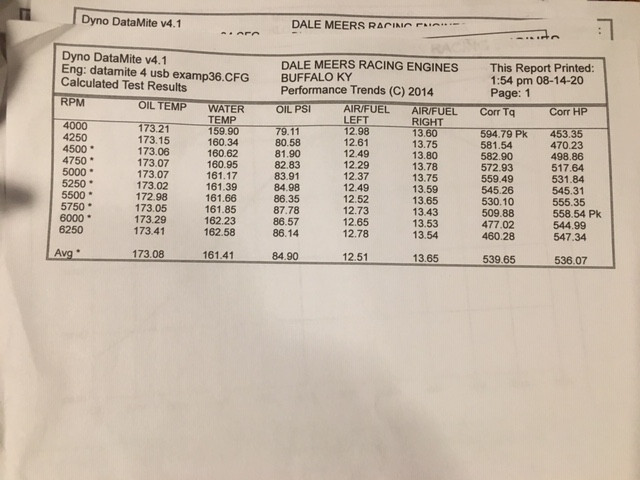
In the end, two very happy motors, one more snarly and vicious attitude than the other, but both will be very strong runners.
I will put the exact build details in the dyno section in separate write ups